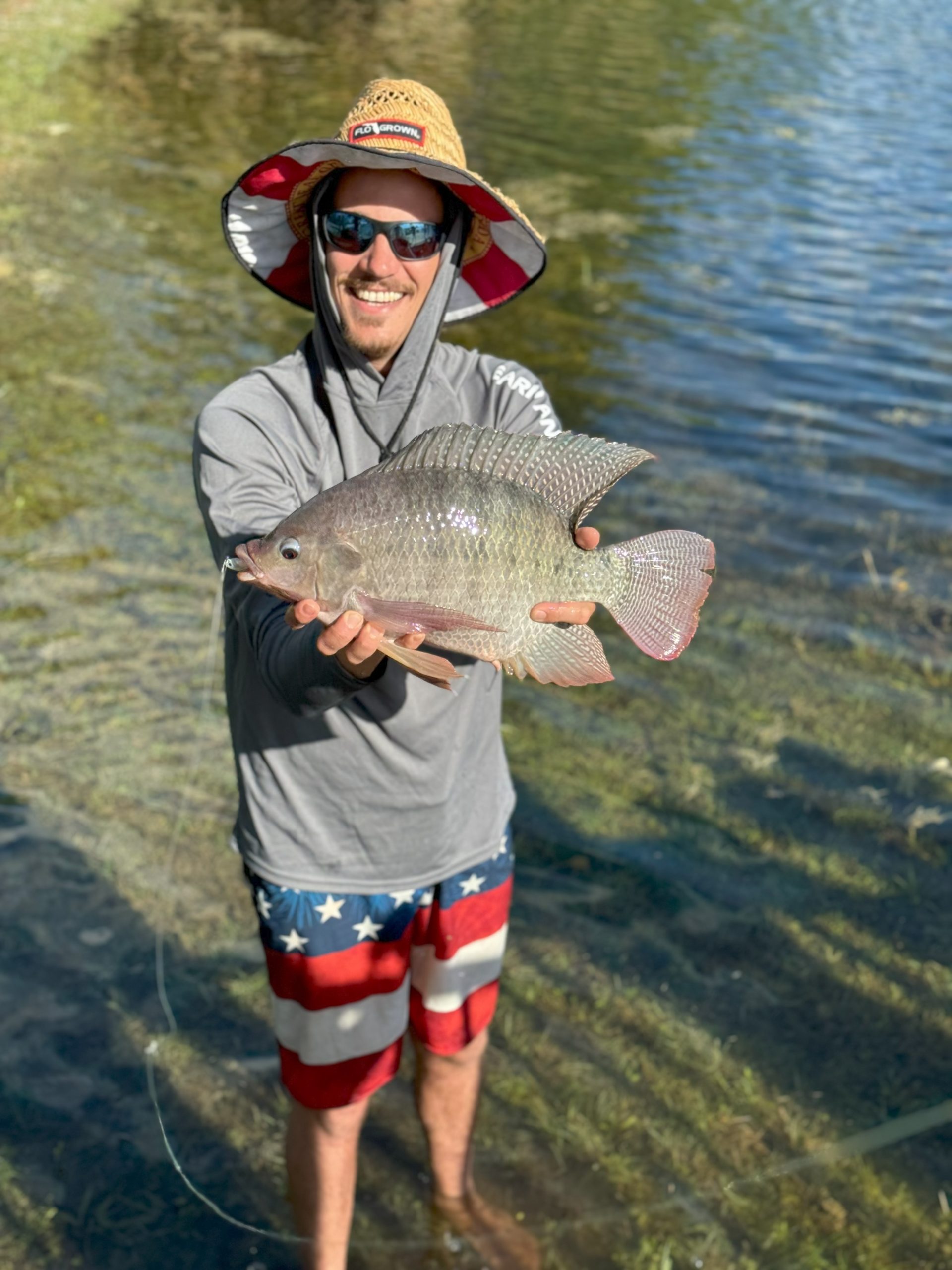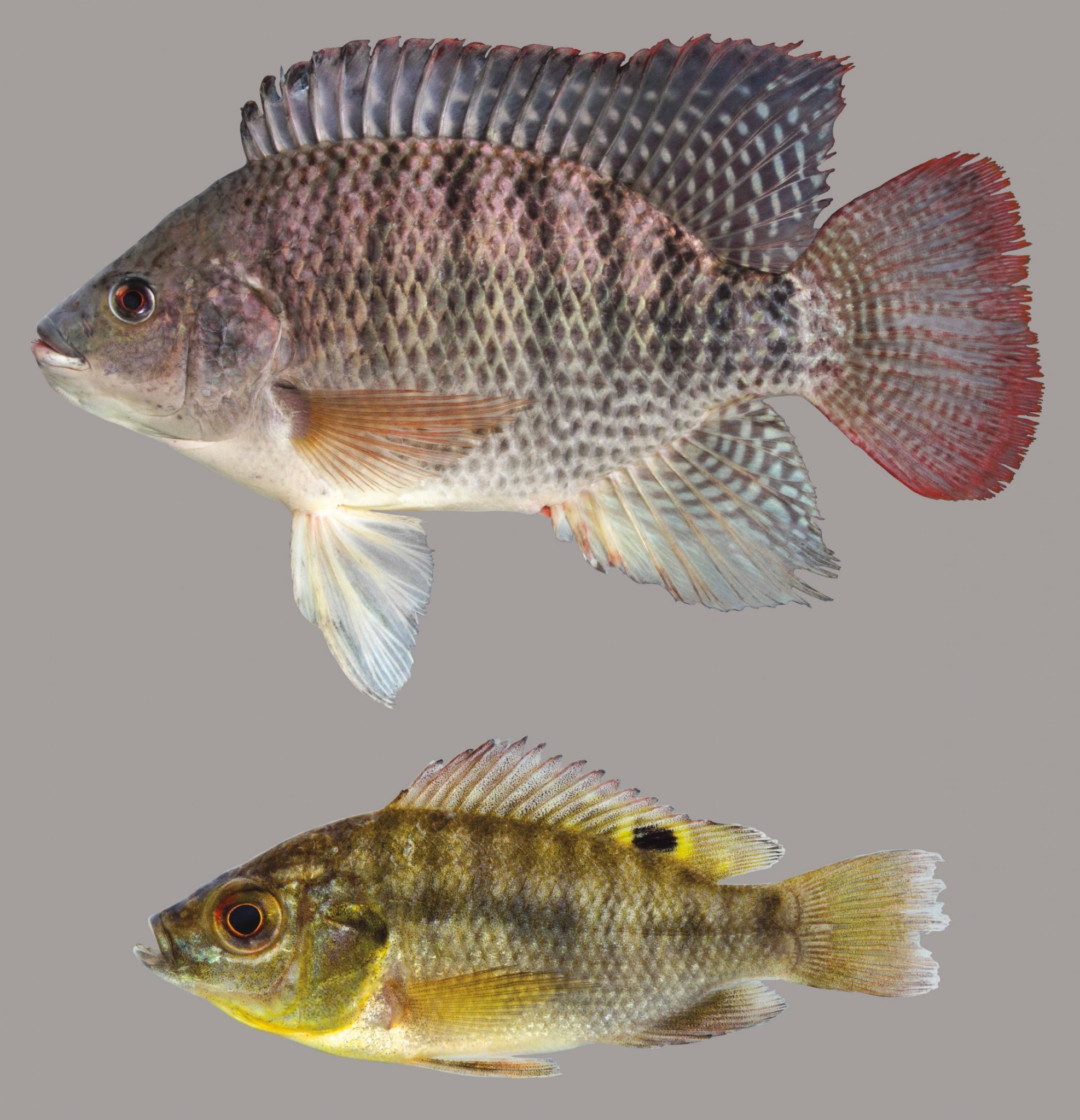Tilapia are a member of the cichlid family, native to Africa and the Middle East. These tropical fish were first introduced to Florida in the early 1960s and have since spread throughout the state’s freshwater systems where they frequent nutrient rich waters, including stormwater ponds. Tilapia are salt tolerant and have been observed in mangrove swamps and near-shore marine habitats. The most common species of Tilapia in Florida is the Blue Tilapia, Oreochromis aureus, considered invasive by the Florida Fish and Wildlife Conservation Commission.
Blue Tilapia are Invasive

Invasive species are organisms that are found outside of their native range, were introduced due to human activity, and cause or are expected to cause harm to the local ecology, economy, or human health. Once outside of their native range, invasive species lack the predators or other natural controls that would otherwise keep their populations in check.
Increasing populations of Blue Tilapia are correlated with decreasing populations of native fish. Blue Tilapia may compete with native species for food as they feed on algae, plant material, and bottom-dwelling invertebrates. They have been known to compete with native fish for spawning sites, and their high reproductive success can lead to dense populations which may crowd native fish out of waterways.
Invasive species commonly possess traits or behaviors that lead to high reproductive success. Female Tilapia practice mouth brooding. Mouth brooding fish hold their eggs and young in their mouth to protect them from predators. This survival strategy increases survival rates by protecting young tilapia during their most vulnerable stages. Tilapia breed year-round, with peak activity during the summer months.
Telltale Signs of Tilapia
Tilapia can often be spotted gathering in shallow areas of stormwater ponds. The Blue Tilapia can grow to nearly 2 feet in length and appear blue-gray from the top, silver along the sides, and white on the belly.

Easily distinguishable tilapia nests may be visible from shore. These nests resemble craters or depressions on the pond bottom. The nesting behavior of tilapia can stir up the bottom sediment of lakes and ponds, decreasing water clarity. Decreased water clarity can negatively impact submerged aquatic plants by blocking the sunlight they require for photosynthesis. Submerged aquatic plants are an important part of a balanced pond ecology and have been associated with increased sediment stabilization and phosphorus removal.

Removing Tilapia
Tilapia can present a challenge to remove from a system once they are introduced. Even if removed, Tilapia can easily reestablish within a stormwater pond. Birds may drop fish, including breeding females, into ponds as they fly overhead. During times of heavy rainfall, stormwater pond levels rise, and ponds may become connected, allowing fish to travel from one pond to the next.
For community stormwater ponds, some Pond Management Companies offer services to remove unwanted Tilapia. Typical means of removal include cast netting, seining, and electrofishing.
In some instances, local bait shops or fish houses may be interested in cast netting for Tilapia to use as bait. Such an arrangement can help support local businesses while reducing Tilapia populations in your pond.
Resources
Blue Tilapia – Florida Fish and Wildlife Conservation Commission
Coastal Invasive Species: Tilapia – Florida Sea Grant
 4
4
